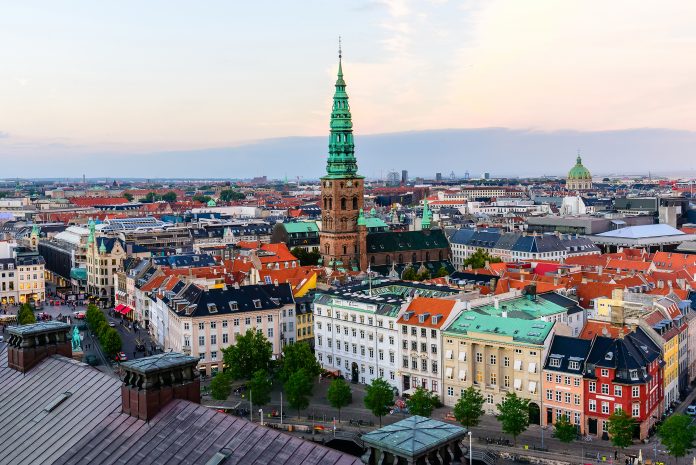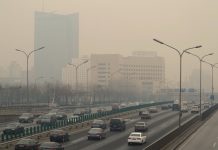Kristoffer Böttzauw, Director General, Danish Energy Agency, explores the impact of green heating in a clean, liveable city
If you take a stroll in the streets of Copenhagen, Denmark, you can see the obvious architectural changes that have come with the investments of the last decades to a more cosmopolitan, liveable city. But if you pay attention, you can also see smaller, subtle differences as a result of the Danish approach to heating systems.
The first thing you will notice in Copenhagen, compared to other cities, is how few chimneys there are. More than 30,000 individual oil and gas boilers have been replaced by underground collective systems since the 1970s, and many buildings simply do not have chimneys anymore or they go unused. Danish design really is all about minimalism – both aesthetically and functionally.
As a result, Copenhagen is cleaner. Since there are no emissions from oil or gas boilers, the city smells fresh. In many countries, heating is a major cause of air pollution, but Copenhagen has become one of the cities with the lowest level of air pollution in the European Union.
The skyline of Copenhagen reflects the impact of decentralised heat planning, since no big power plants with cooling towers dominate the skyline. Instead, there is an underground network of many, smaller energy centres. Since these do not require cooling towers, they are typically discreet in the urban environment – except the newly opened Amager Bakke, which is a combined heat and power waste-to-energy plant and a ski sports facility.
A global energy crisis boosted the development of district heating in Denmark
Besides the aesthetic benefits, the Danish approach of integrating heat planning into energy planning has had more fundamental consequences for the Danish energy (and economic) transition over the past fifty years. Today, Denmark is a global frontrunner with the most efficient district heating system in the world. Two-thirds of all Danish households are connected to the system. But it has not always been like that. The switch from individual oil and gas boilers to district heating systems has not only played a role in the city architecture, but also an important role in reducing CO2 emissions. This is seen through an increased decoupling of energy intensity and economic growth, including a 53% reduction in CO2 emissions since 1975 and a doubling of GDP in the same period.
The flexibility of district heating networks has also allowed Denmark to respond to different strategic challenges over the years. For example, responding to the security of supply disruptions in the 1970s, a global fuel crisis in the 1980s, and today in the form of rising gas prices.
Moreover, integrating energy and heat planning has also supported the success of the Danish wind industry. It has been possible to integrate renewable wind sources better through decentralisation and flexibility, also in the heating sector. This has been done through efficient and flexible dispatch of co- generation plants; direct electrification through large heat pumps, and intelligent storage systems in heating. This is one of the reasons why Denmark already can supply around 50% of its electricity through wind with minimal curtailing.
Great potential for green heating in China
Today, around a third of the world’s energy is used for heating. The Danish Energy Agency cooperates with 19 countries around the world, including China, on green transition where district heating is one of several effective tools to reduce carbon emissions and decrease air pollution. By sharing and expanding knowledge and capacity in the partner countries’ national authorities, policymakers are empowered to make sustainable and cost-effective energy policy decisions that support the global sustainable transition.
China is not only the world’s most populous nation, but also the largest CO2-emitter. The large CO2 emissions and air pollution challenges are a strong driving force for China in terms of switching to a greener energy system. Today, the vast majority of energy used in heating buildings in China comes from coal. A calculation from the Danish Energy Agency, based on a pilot project, shows that China can reduce its yearly CO2-emissions by between 326 and 652 million tonnes by 2050 – by switching to a Danish-inspired district heating system.
In China, we recently launched a Sino-Danish Clean Heating Center, where we are collaborating with Danish experts and relevant Chinese energy authorities to collect and analyse case studies, pieces of training, and planning tools. These aim to support clean and renewable heating practices in China. There is a potential to transition 200 million people in northern China away from coal and towards clean and renewable district heating, which supports China in addressing local air pollution and reaching the country’s climate goals.
So, the potential for heating networks is not specific to Denmark. Perhaps one day in the not so far future, large Chinese cities as Beijing and Shanghai will also be able to replace chimneys with intelligent heating networks for the benefit of urban living and the planet.
Contributor Profile
Editor's Recommended Articles
-
Must Read >> The European Climate Pact
-
Must Read >> China pledges zero-carbon emissions by 2060














